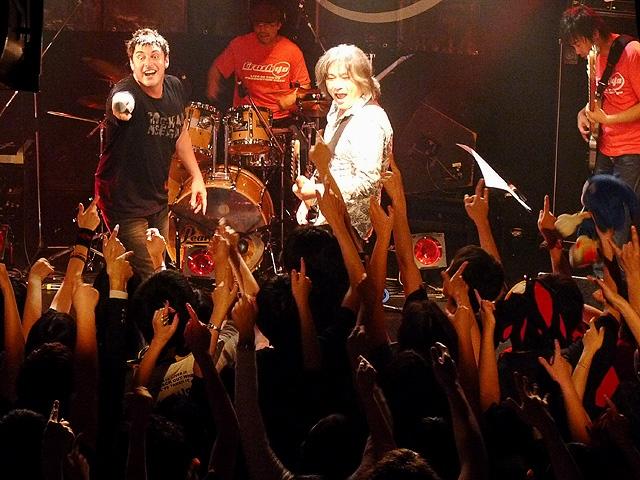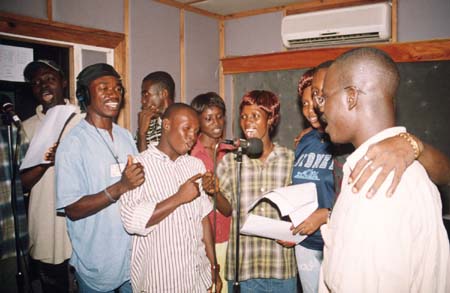|
Sonic The Hedgehog 4
is a 2010 platform game developed by Dimps, with assistance from Sonic Team, and published by Sega. It is a sequel to ''Sonic & Knuckles'' (1994), following Sonic as he sets out to stop a returning Doctor Eggman. Like the ''Sonic the Hedgehog'' games released for the Sega Genesis, ''Episode I'' features side-scrolling gameplay, with movement restricted to a 2D plane. The player races through levels collecting rings while rolling into a ball to attack enemies. The game also features special stages in which the player collects Chaos Emeralds and online leaderboards comparing level completion times and high scores. Development began in May 2009 and lasted a year and a half. The game was conceived as a smartphone-exclusive spin-off before becoming a multiplatform, mainline ''Sonic'' installment. As a continuation of the Genesis ''Sonic'' games, ''Episode I'' features a simple control scheme, no voice acting, level design emphasizing platforming and momentum-based gameplay, a ... [...More Info...] [...Related Items...] OR: [Wikipedia] [Google] [Baidu] |
Dimps
is a Japanese video game developer based in Osaka, Japan, with an additional office in Tokyo. It is best known for developing games in the ''Sonic the Hedgehog'', '' Dragon Ball'' and ''Street Fighter'' franchises. The company was founded on March 6, 2000 by several former SNK and Capcom employees, including ''Street Fighter'', ''Fatal Fury'', ''Art of Fighting'' and ''The King of Fighters'' co-creator Takashi Nishiyama and Hiroshi Matsumoto. Games developed 2001–2004 2005–2009 2010–2014 2015–2019 2020–present References External links * Safari Games website ''Dimps'' profileon MobyGames MobyGames is a commercial website that catalogs information on video games and the people and companies behind them via crowdsourcing. This includes nearly 300,000 games for hundreds of platforms. The site is supported by banner ads and a small ... Bandai Namco Holdings subsidiaries Video game companies of Japan Companies based in Osaka Prefecture Video ga ... [...More Info...] [...Related Items...] OR: [Wikipedia] [Google] [Baidu] |
Doctor Eggman
Doctor Ivo "Eggman" Robotnik is the main antagonist of Sega's ''Sonic the Hedgehog'' franchise. Eggman was created and designed by Naoto Ohshima as part of many design choices for Sega's new mascot. After the creation of Sonic the Hedgehog, Ohshima chose to use his previous egg-shaped character to create the antagonist of the 1991 video game ''Sonic the Hedgehog'', making him the arch-nemesis of the series' eponymous main character. In the main line of video games, Eggman is a dastardly mad scientist who plans to conquer the world to build his own empire. While he has gone through several major and minor appearance changes throughout the series, his in-game designs retain several basic characteristics, such as his ovate body, red-black-yellow clothing, bald head, a onesie, pince-nez sunglasses, and large mustache. Eggman commonly creates machines and robots, including a wide variety of Badniks. Notably in early games, he has also served as a recurring boss, appearing in ... [...More Info...] [...Related Items...] OR: [Wikipedia] [Google] [Baidu] |
Voice Acting
Voice acting is the art of performing voice-overs to present a character or provide information to an audience. Performers are called voice actors/actresses, voice artists, dubbing artists, voice talent, voice-over artists, or voice-over talent. Voice acting is recognised as a specialized dramatic profession in the United Kingdom, primarily due to BBC broadcasts of radio drama production. Examples of voice work include animated, off-stage, off-screen or non-visible characters in various works such as feature films, dubbed foreign-language films, animated films, anime, television shows, video games, cartoons, documentaries, commercials, audiobooks, radio dramas and comedies, amusement rides, theater productions, puppet shows and audio games. Voice actors are also heard through pre-recorded and automated announcements that are a part of everyday modern life in areas such as shops, elevators, waiting rooms and public transport. The role of a voice actor may involve singin ... [...More Info...] [...Related Items...] OR: [Wikipedia] [Google] [Baidu] |
Multiplatform
In computing, cross-platform software (also called multi-platform software, platform-agnostic software, or platform-independent software) is computer software that is designed to work in several computing platforms. Some cross-platform software requires a separate build for each platform, but some can be directly run on any platform without special preparation, being written in an interpreted language or compiled to portable bytecode for which the interpreters or run-time packages are common or standard components of all supported platforms. For example, a cross-platform application may run on Microsoft Windows, Linux, and macOS. Cross-platform software may run on many platforms, or as few as two. Some frameworks for cross-platform development are Codename One, Kivy, Qt, Flutter, NativeScript, Xamarin, Phonegap, Ionic, and React Native. Platforms ''Platform'' can refer to the type of processor (CPU) or other hardware on which an operating system (OS) or application runs ... [...More Info...] [...Related Items...] OR: [Wikipedia] [Google] [Baidu] |
Spin-off (media)
In media, a spin-off (or spinoff) is a radio program, television program, film, video game or any narrative work, derived from already existing works that focus on more details and different aspects from the original work (e.g. particular topics, characters or events). One of the earliest spin-offs of the modern media era, if not the first, happened in 1941 when the supporting character Throckmorton P. Gildersleeve from the old time radio comedy show '' Fibber McGee and Molly'' became the star of his own program '' The Great Gildersleeve'' (1941–1957). In genre fiction, the term parallels its usage in television; it is usually meant to indicate a substantial ''change in narrative viewpoint and activity'' from that (previous) storyline based on the activities of the series' principal protagonist and so is a shift to that action and overall narrative thread of some other protagonist, which now becomes the central or main thread (storyline) of the new sub-series. The ''new pr ... [...More Info...] [...Related Items...] OR: [Wikipedia] [Google] [Baidu] |
Smartphone
A smartphone is a portable computer device that combines mobile telephone and computing functions into one unit. They are distinguished from feature phones by their stronger hardware capabilities and extensive mobile operating systems, which facilitate wider software, internet (including web browsing over mobile broadband), and multimedia functionality (including music, video, cameras, and gaming), alongside core phone functions such as voice calls and text messaging. Smartphones typically contain a number of metal–oxide–semiconductor (MOS) integrated circuit (IC) chips, include various sensors that can be leveraged by pre-included and third-party software (such as a magnetometer, proximity sensors, barometer, gyroscope, accelerometer and more), and support wireless communications protocols (such as Bluetooth, Wi-Fi, or satellite navigation). Early smartphones were marketed primarily towards the enterprise market, attempting to bridge the functionality of ... [...More Info...] [...Related Items...] OR: [Wikipedia] [Google] [Baidu] |
High Score
In games, score refers to an abstract quantity associated with a player or team. Score is usually measured in the abstract unit of points (except in game shows, where scores often are instead measured in units of currency), and events in the game can raise or lower the score of different parties. Most games with score use it as a quantitative indicator of success in the game, and in competitive games, a goal is often made of attaining a better score than one's opponents in order to win. Video games In video games that feature scoring, points are usually an optional, side component of gaming. Players may achieve points through normal gameplay, but their score will often not have an immediate relevance to the game itself. Instead, playing to beat a "high score" set by the game program, another player or oneself becomes an extra challenge, adding replay value. In modern gaming, the presence of a score is not as ubiquitous as it was in the past. During the era of arcade games, ... [...More Info...] [...Related Items...] OR: [Wikipedia] [Google] [Baidu] |
Online Leaderboards
A ladder tournament (also known as a ladder competition or pyramid tournament) is a form of tournament for games and sports. Unlike many tournaments, which usually have an element of elimination, ladder competitions can go on indefinitely. In a ladder competition, players are listed as if on the rungs of a ladder. The objective for a player is to reach the highest rung of the ladder. Description The competition proceeds via a system of challenges. Any player can challenge a player above them on the ladder. These challenges generally should not or can not be declined. If the lower-placed player wins the match, then the two players swap places on the ladder. If the lower-placed player loses, then they may not challenge the same person again without challenging someone else first. There is a limit as to how many rungs above themselves players may challenge. When first setting up a ladder tournament, the usual practice is to place the more skilled players at the bottom of the ladder ... [...More Info...] [...Related Items...] OR: [Wikipedia] [Google] [Baidu] |
Chaos Emeralds
is a Japanese video game series and media franchise created by Sega. The franchise follows Sonic the Hedgehog (character), Sonic, an anthropomorphic blue hedgehog who battles the evil Doctor Eggman, a mad scientist. The main ''Sonic the Hedgehog'' games are platformers mostly developed by Sonic Team; other games, developed by various studios, include Spin-off (media), spin-offs in the racing video game, racing, fighting game, fighting, party game, party and sports game, sports genres. The franchise also incorporates List of Sonic the Hedgehog printed media, printed media, List of Sonic the Hedgehog features, animations, feature films, and merchandise. Sega developed the Sonic the Hedgehog (1991 video game), first ''Sonic'' game, released in 1991 for the Sega Genesis, to compete with Nintendo's mascot Mario. Its success helped Sega become one of the leading video game companies during the fourth generation of video game consoles in the early 1990s. Sega Technical Institute dev ... [...More Info...] [...Related Items...] OR: [Wikipedia] [Google] [Baidu] |
Bonus Stage
A bonus stage (also known as a bonus level, bonus round, or special stage) is a special level within a video game designed to reward the player or players, and typically allows the player to collect extra points or power-ups. Bonus stage either have no enemies or hazards, or replace the normal penalties for being struck by enemies or hazards with simply being thrown out of the bonus stage. Many bonus stages need to be activated or discovered in some manner, or certain conditions must be satisfied to access them. Otherwise, they appear after the player has completed a certain number of regular stages. They are often much shorter than regular stages. Unlike most regular stages, a bonus stage does not normally have to be completed to move on. While a regular stage must be replayed until completion, possibly using up lives or continues upon failures, when a player begins a bonus stage they have one chance at it. Some bonus stages do contain an end location or condition to reach, but ... [...More Info...] [...Related Items...] OR: [Wikipedia] [Google] [Baidu] |
Rings (Sonic The Hedgehog)
is a Japanese video game series and media franchise created by Sega. The franchise follows Sonic, an anthropomorphic blue hedgehog who battles the evil Doctor Eggman, a mad scientist. The main ''Sonic the Hedgehog'' games are platformers mostly developed by Sonic Team; other games, developed by various studios, include spin-offs in the racing, fighting, party and sports genres. The franchise also incorporates printed media, animations, feature films, and merchandise. Sega developed the first ''Sonic'' game, released in 1991 for the Sega Genesis, to compete with Nintendo's mascot Mario. Its success helped Sega become one of the leading video game companies during the fourth generation of video game consoles in the early 1990s. Sega Technical Institute developed the next three ''Sonic'' games, plus the spin-off '' Sonic Spinball'' (1993). A number of ''Sonic'' games were also developed for Sega's 8-bit consoles, the Master System and Game Gear. After a hiatus during the u ... [...More Info...] [...Related Items...] OR: [Wikipedia] [Google] [Baidu] |
Level (video Games)
In video games, a level (also referred to as a map, stage, or round in some older games) is any space available to the player during the course of completion of an objective. Video game levels generally have progressively-increasing difficulty to appeal to players with different skill levels. Each level may present new concepts and challenges to keep a player's interest high. In games with linear progression, levels are areas of a larger world, such as Green Hill Zone. Games may also feature interconnected levels, representing locations. Although the challenge in a game is often to defeat some sort of character, levels are sometimes designed with a movement challenge, such as a jumping puzzle, a form of obstacle course. Players must judge the distance between platforms or ledges and safely jump between them to reach the next area. These puzzles can slow the momentum down for players of fast action games; the first ''Half-Life'''s penultimate chapter, "Interloper", featured mul ... [...More Info...] [...Related Items...] OR: [Wikipedia] [Google] [Baidu] |







